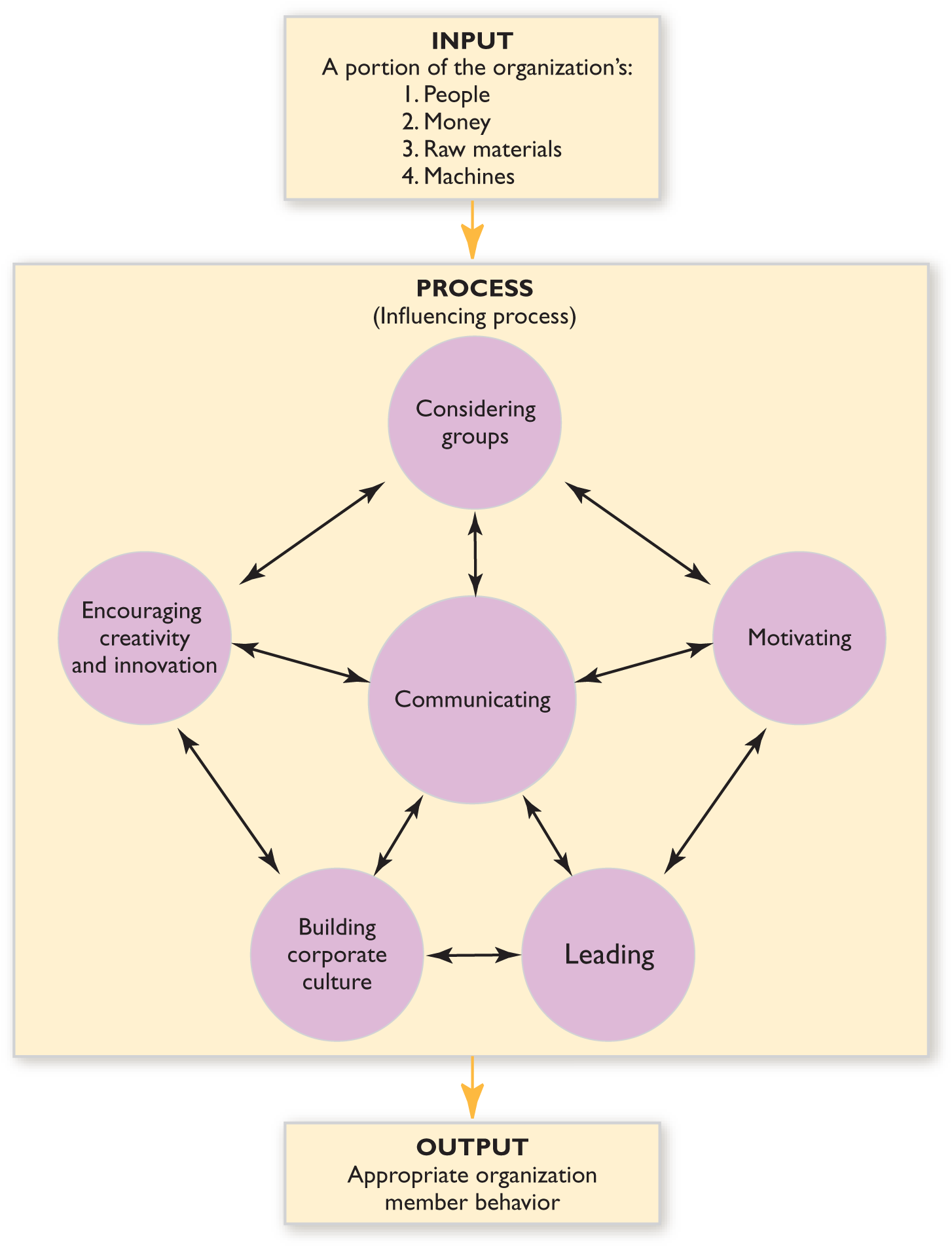Fundamentals of Influencing
The four basic managerial functions—planning, organizing, influencing, and controlling—were introduced in Chapter 1. Planning and organizing have already been discussed; influencing is the third of these basic functions covered in this text. A definition of influencing and a discussion of the influencing subsystem follow.
Defining Influencing
Influencing is the process of guiding the activities of organization members in appropriate directions. Appropriate directions, of course, are those that lead to the attainment of management system objectives. Influencing thus involves focusing on organization members as people and dealing with such issues as morale, arbitration of conflicts, and the development of good working relationships.3 Influencing is a critical part of a manager’s job; in fact, the ability to influence others is a primary determinant of a successful manager.4
The Influencing Subsystem
Like the planning and organizing functions, the influencing function can be viewed as a subsystem within the overall management system (see Figure 12.1). The primary purpose of the influencing subsystem, as already stated, is to enhance the attainment of management system objectives by guiding the activities of organization members in appropriate directions.5

Figure 12.1 Relationship between overall management system and influencing subsystem
Figure 12.2 shows the constituent parts of the influencing subsystem. The input of this subsystem is composed of a portion of the total resources of the overall management system, and its output is appropriate organization member behavior. The process of the influencing subsystem involves the performance of six primary management activities:
-
Leading
-
Motivating
-
Considering groups
-
Communicating
-
Encouraging creativity and innovation
-
Building corporate culture
Managers transform a portion of organizational resources into appropriate organization member behavior mainly by performing these activities.

Figure 12.2 The influencing subsystem
As Figure 12.2 shows, leading, motivating, considering groups, building corporate culture, communicating, and encouraging creativity and innovation are interrelated. To some extent, managers accomplish each of these influencing activities by communicating with organization members. For example, managers can decide what kinds of leaders they need to be only after they first analyze the characteristics of the various groups with which they will interact and second determine how those groups can best be motivated. Then, regardless of the leadership strategy they adopt, their leading, motivating, and working with groups, for example, will be accomplished—at least partly—through communication with other organization members.
In fact, all management activities are accomplished at least partly through communication or communication-related endeavors. Because communication is used repeatedly by managers, the ability to communicate is often referred to as the fundamental management skill.
A recent survey of chief executives supports this notion that communication is the fundamental management skill. The results, which appear in Table 12.1, show that CEOs ranked oral and written communication skills first (along with interpersonal skills) among those that should be taught to management students.
Table 12.1 Chief Executives’ Ranking of Skills They Believe Should Be Taught to Management Students
| Rank* | Key Learning Area | Frequency Indicated |
|---|---|---|
| 1 | Oral and written communication skills | 25 |
| 1 | Interpersonal skills | 25 |
| 3 | Financial/managerial accounting skills | 22 |
| 4 | Ability to think, be analytical, and make decisions | 20 |
| 5 | Strategic planning and goal setting—concern for long-term performance | 13 |
| 6 | Motivation and commitment to the firm—giving 110 percent | 12 |
| 7 | Understanding of economics | 11 |
| 8 | Management information systems and computer applications | 9 |
| 8 | Thorough knowledge of your business, culture, and overall environment | 9 |
| 8 | Marketing concept (the customer is king) and skills | 9 |
| 11 | Integrity | 7 |
| 11 | Knowledge of yourself: setting long- and short-term career objectives | 7 |
| 13 | Leadership skills | 6 |
| 13 | Understanding of the functional areas of the business | 6 |
| 15 | Time management: setting priorities—how to work smart, not long or hard | 1 |
|
*1 is most important. |
||
